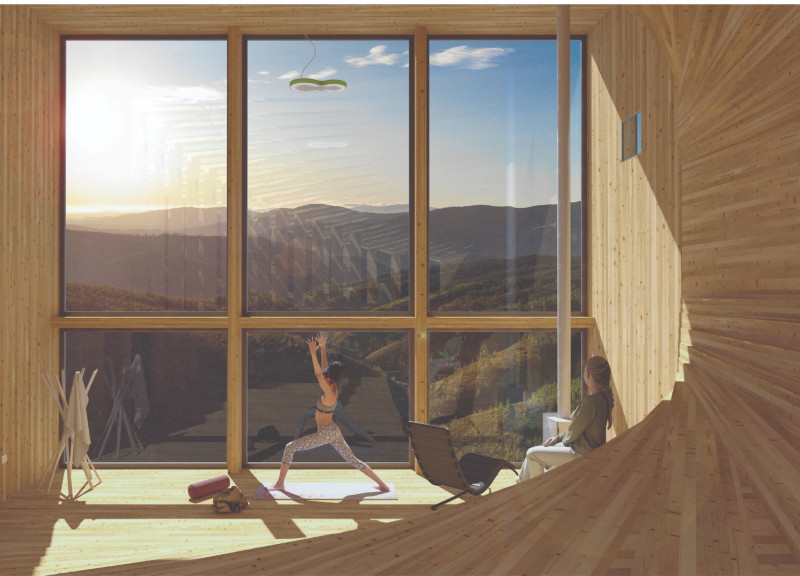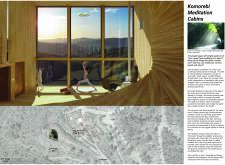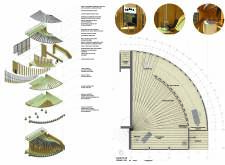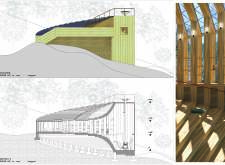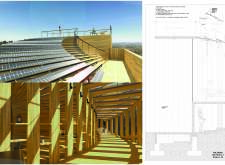5 key facts about this project
At the heart of the project is a versatile structure that skillfully balances aesthetics with practicality. One notable feature is the open layout which facilitates fluid movement and accessibility throughout the space. This design approach enhances user experience, enabling occupants to seamlessly navigate from one area to another, whether they are engaging in recreational activities, attending community events, or utilizing the facilities for personal endeavors. The architects deliberately designed the interior to promote flexibility, allowing the spaces to be reconfigured to suit different functions as needed, which speaks to the modern emphasis on adaptability in architectural design.
The materiality of the building is particularly noteworthy, incorporating locally sourced materials that resonate with the surrounding landscape. The use of exposed concrete for the main structure not only contributes to the building's durability but also connects it visually and texturally to the urban environment. Large expanses of glass invite natural light to permeate the interior spaces, fostering a sense of openness and transparency that enhances the overall atmosphere. This careful selection of materials reflects a commitment to sustainability and the intention of minimizing the ecological footprint of the project. Additionally, the incorporation of green roofs and living walls adds a layer of environmental responsiveness, promoting biodiversity and improving air quality in the urban context.
Unique design elements further distinguish this project from typical architectural offerings. One of these is the incorporation of terraced outdoor areas that extend the building's footprint while providing tranquil spaces for relaxation and social gatherings. These terraces not only enhance the project's functionality but also encourage engagement with the natural environment, inviting users to step outside and enjoy the surrounding views. The connectivity between indoor and outdoor spaces is a testament to the architects’ vision of creating a holistic experience for users.
Furthermore, the design capitalizes on energy efficiency, integrating solar panels into the roof design and employing passive heating and cooling techniques. This sustainable approach showcases a progressive understanding of architecture as not merely a structural endeavor but as a contributor to the broader environmental and social fabric. The project's commitment to sustainable practices enhances its appeal, emphasizing its role as a model for future architectural designs that aspire to harmonize with nature.
Throughout the design process, the architects engaged with community members to ensure that the outcomes aligned with the needs and desires of those who would use the space. This participatory approach informed critical decisions regarding layout, functionality, and aesthetics, resulting in a project that is not only a product of architectural vision but also a reflection of community values and aspirations. The careful consideration of community input illustrates the importance of context in architectural design, demonstrating that successful projects are those that resonate with and serve their intended users.
The culmination of these design strategies and thoughtful interventions results in a project that stands as a significant addition to the architectural landscape. It embodies a philosophy of architecture that values social connectivity, sustainability, and adaptability. Readers interested in exploring this project further are encouraged to review the architectural plans, architectural sections, architectural designs, and architectural ideas presented. These resources provide deeper insights into the intricate details and innovative approaches that make this project worthy of attention.


